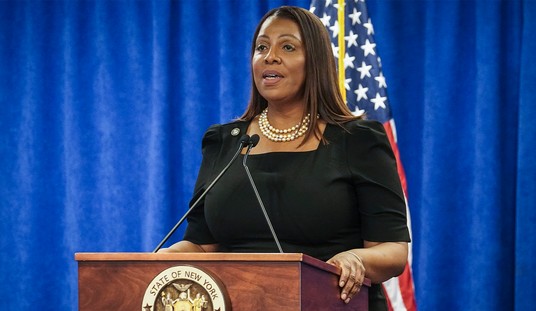The Salt Lake Comic Con is more than just a chance to parade around in costumes and squeal over the chance to see your favorite star. The panels cover some interesting and serious topics. This year, Batton Lash, Steve Kent, Chad Hardin, Steven Grant and Joey Majdali discussed free speech, censorship and the Comics Code of 1954. The code for decades reinforced the impression that comics were for kids. It died a quiet death in 2011, but is an important part of the genre’s history. If you love comics, here are ten things you should know:
1. It wasn’t government censorship.
https://www.youtube.com/watch?v=5gnGxSkILP4
The Comics Code was developed by the major publishers of the time in response to societal — and governmental — pressure. In the 1930s, teachers claimed comic books decreased literacy. They were joined by those who worried about the morality of the illustrations. Finally, the mental health industry threw in its hat, claiming that comic books led to desensitization to violence and a desire to imitate the characters. (Sound familiar?) The comic book companies determined 41 areas, covering nudity as well as the depiction of violence and horror.
2. Direct sales killed it.
For nearly sixty years, the only way to get your comics sold in newsstands or chain stores was with the Comics Code Authority Seal of Approval. Many indie comics didn’t comply, and their sales usually suffered…until direct sales.
Thanks to direct sales distributors, comics publishers didn’t have to go through the gatekeepers. Then Amazon, with its direct line to readers, struck the last blow.
3. It’s arbitrary at times.
When comic artist Chad Hardin started drawing for DC’s Harley Quinn comics, he discovered some things he’d drawn in other comics were not suitable even for the violent Harley. “Nails in the skin. There was a whole scene in a hardware store I had to redraw,” he said, but the restrictions on animal anatomy grieved him more. “They’re taking out dog balls, but she knocks someone’s head off with a hammer. Which is more offensive?”
4. It was run by housewives!
“Sale or no sale, I’m swamped. I have all these comics to read!”
Crazy things, like Jimmy Olsen’s debut as a werewolf, got past the censors, while some got rejected for grammatical errors. Steven Grant gave this explanation: The “censors” were bored housewives! Apparently, John Goldwater of Archie Comics, which organized the Comics Code organization, hired housewives in Connecticut to read and assess the comics. So, Grant concluded, in essence you were at the mercy of the tastes of these conservative stay-home wives in a little town up East. As for how Howling Jimmy got past? “I guess she thought he looked cute as a werewolf.”
https://www.youtube.com/watch?v=j5ixcPnbjac
5. It meant over a decade without cleavage.
Comic book women without peek-a-boo costumes? It’s true. According to Batton Lash, for fifteen years cleavage was prohibited. Even a slightly low-cut dress was redrawn to avoid any hint of a woman’s attributes. Frankly, if you compare the comics, it seems to be more a matter of raising necklines and reducing cup sizes.
6. It’s responsible for Mad magazine.
https://www.youtube.com/watch?v=X9XcsEnBxio
William Gaines, founder of Mad magazine, originally owned EC Comics in the 1950s. The cover art of his horror line, which depicted severed heads and other time-honored images of horror, was what brought the morality crisis to a head and resulted in the formation of the Comics Code. At first, he refused to join in; then he did join to keep his comics alive. There are several stories about why he folded EC Comics, but the important thing is he took his sideline comic, Mad, and turned it into Mad magazine to get around the jurisdiction of the CMAA. All of us who grew up on Mad‘s ribald humor and hilarious parodies can thank the Comics Code.
7. The code is gone, but there are still publisher-led restrictions.
Even though the Comics Code and its Seal of Approval are a thing of the past, there is still censorship going on within the industry, as evidenced by Hardin’s anatomically incorrect canines. Public reaction will continue to have an influence on what is and is not allowed. Marvel and DC in particular have more than comics to consider. They see themselves as multimedia corporations, Grant noted, so the wrong controversy concerning a comic could affect their returns at the theater as well. Bigger corporations take public opinion more seriously, as they perceive themselves as having more to lose. Ironically, they are also more likely to be worried about the opinions of nonreaders. “There is such a thing as bad publicity,” Grant said.
8. Comic book writers and artists believe in free speech.
The Comics Code sprang from a desire to protect free speech, not throttle it. The comic book companies preferred to self-regulate rather than have government regulation forced upon them. As Kent noted, there’s a difference between a publisher deciding what should and should not be published, and the government telling an artist what he can or cannot draw. Unfortunately, while on the one hand the indie comic movement and direct sales have spurred a widening of expression, free speech is under new threat.
9. Political correctness threatens free speech.
In the ‘50s, the concern was comic books encouraging delinquency in juveniles. Now, the panelists said, the problem comes from adults taking offense at perceived slights to gender, race or other personal factors. “The problem is, we’re in a victim culture where everyone feels put upon,” said Lash.
10. The best way to protect free speech is to practice free speech.
It’s your right. Will you practice and protect it?
****










Join the conversation as a VIP Member